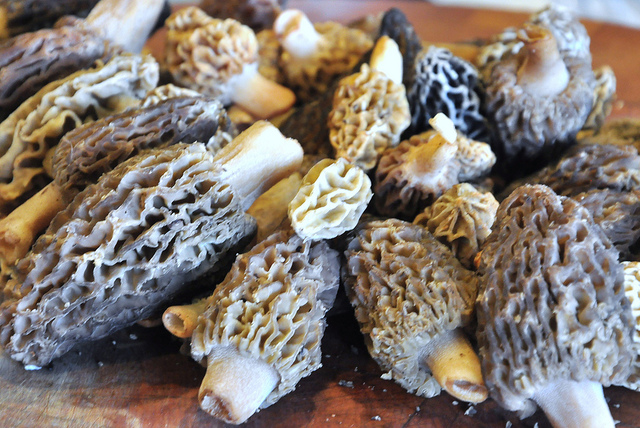 Damnit morels, you shall bend to my will! This was my thought when I rounded the corner at the grocery store the other day and spied my old nemeses lying nonchalantly among the shitakes and bellas. In spite of my terrible first experience with morels, or maybe because of it, I was suddenly possessed with an overwhelming desire to conquer them for once and for all. Or at least prove to myself that they suck no matter what I do to them. So I picked out a very small number of the good’uns (after all, I was only cooking for myself, plus this was an experiment, plus they’re super freaking expensive) and made up my mind that in spite of the advice of all the morel connoisseurs, I was going to soak the hell out of these puppies and then torture them to death in the frying pan, because the intolerable grittiness and chewy consistency are what did me in so thoroughly the last time. Although morel lovers might tell you it’s unnecessary to soak them or that it will compromise their flavor, I’m here to tell you this: The morels I made after soaking them for several hours in salt water vs. the morels I made last month following the advice of the experts to “preserve the flavor” were like night and day. The morel* of the story is, don’t underestimate how much gritty, tripe-like mushrooms can ruin a dish.
Damnit morels, you shall bend to my will! This was my thought when I rounded the corner at the grocery store the other day and spied my old nemeses lying nonchalantly among the shitakes and bellas. In spite of my terrible first experience with morels, or maybe because of it, I was suddenly possessed with an overwhelming desire to conquer them for once and for all. Or at least prove to myself that they suck no matter what I do to them. So I picked out a very small number of the good’uns (after all, I was only cooking for myself, plus this was an experiment, plus they’re super freaking expensive) and made up my mind that in spite of the advice of all the morel connoisseurs, I was going to soak the hell out of these puppies and then torture them to death in the frying pan, because the intolerable grittiness and chewy consistency are what did me in so thoroughly the last time. Although morel lovers might tell you it’s unnecessary to soak them or that it will compromise their flavor, I’m here to tell you this: The morels I made after soaking them for several hours in salt water vs. the morels I made last month following the advice of the experts to “preserve the flavor” were like night and day. The morel* of the story is, don’t underestimate how much gritty, tripe-like mushrooms can ruin a dish.
This batch, however, made me understand why people are so cuckoo for morels. They are just super rich, meaty, earthy, forest-y, and … je ne sais quoi. I did so very little to them aside from the soaking and the stovetop abuse, yet nevertheless they were delish. So, yeah, I stand corrected, they don’t suck. Though I do still think they’re super creepy-looking. Regardless. You should try them. And in case you were concerned, a word about them being expensive: Yes, you might find them as high as $40/lb. But they are super light and you don’t need very much. 1/4 lb is often all you need for 2 – 3 servings. Which isn’t cheap, but it’s doable.
Here’s whatcha do:
Find a place that sells morels. The only places I’ve ever seen them here are Whole Foods and the farmer’s market. Pick morels that are spongy and light to medium brown, not super dry and not super moist. If you rub your finger the length of them, they shouldn’t crumble – that’s a sign they’re old. Once purchased, take them home and if you must store them, put them in a paper bag or a basket covered with a moist paper towel and refrigerate. Don’t keep them too long – their shelf life isn’t more than a week and you don’t know how long it took them to get to you in the first place. I’d say eat them within 3 days or less of buying them.
When you’re ready to prepare them, shake them up in their container to dislodge any loose debris. Rinse them thoroughly. Cut them in half (lengthwise). Fill a bowl with cold water and place them in it to soak. The folds of the mushroom are what you want to cleanse, so be sure they are brainy side down in the water.
I soaked mine for about 6 hours, replacing the water 5 times, stirring salt into the water for 2 of the 5 soaks and agitating them in the water at least once per soak. When I was finally ready to prepare them, I agitated them for a minute or two, then rinsed them thoroughly in running water before moving them to a towel and patting them dry.
Perhaps this is where I should mention that I’m obsessed with mushrooms and don’t mind putting this much work into them at all. Some of you may think this is ridiculous, and who am I to say you’re wrong. But I love mushrooms. So back to the recipe.
Simple Morels
- 1/4 lb morels, thoroughly soaked (see above), halved, stems removed
- 2 tbsp chopped parsley
- 1 small leek, thoroughly cleaned and sliced
- 1 clove garlic, minced
- 1 – 2 tbsp olive oil
- Sea salt to taste
Heat a small nonstick pan over medium heat. Add the oil. When the oil is hot, add the morels and a bit of salt. Cook them for a couple of minutes, then add the leek & garlic and a bit more salt, if desired. Cook the whole mixture for a total of about 5 – 8 minutes, until the morels have shrunken noticeably and are very soft. Remove from heat and stir in the parsley while still hot.
Serve as a tapa by themselves. Nom nom nom … In the meantime, I will work on coming up with something a bit more substantial to serve as a main course or something.
*Pronounced More- ELL (contrary to what my pun might suggest)
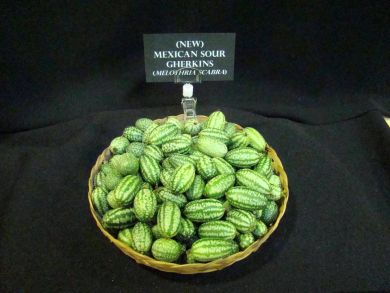

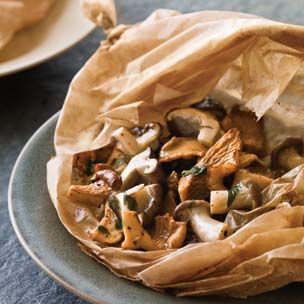
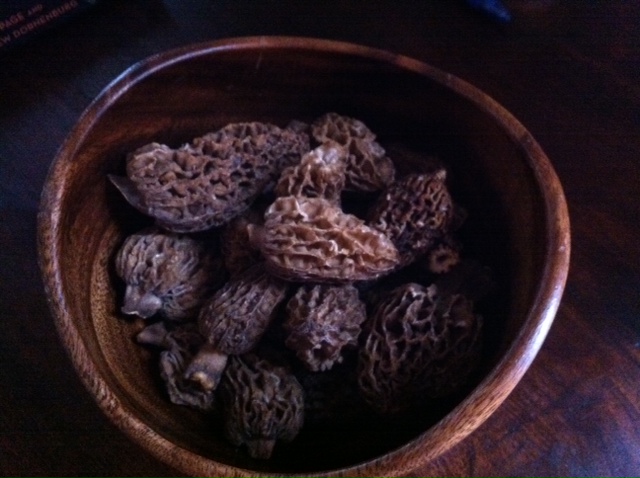
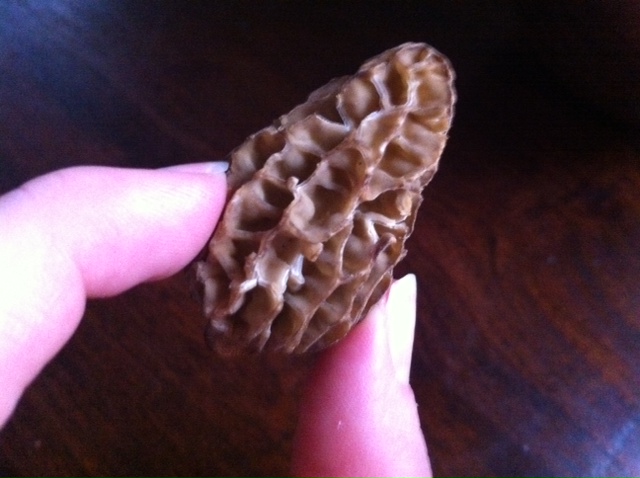
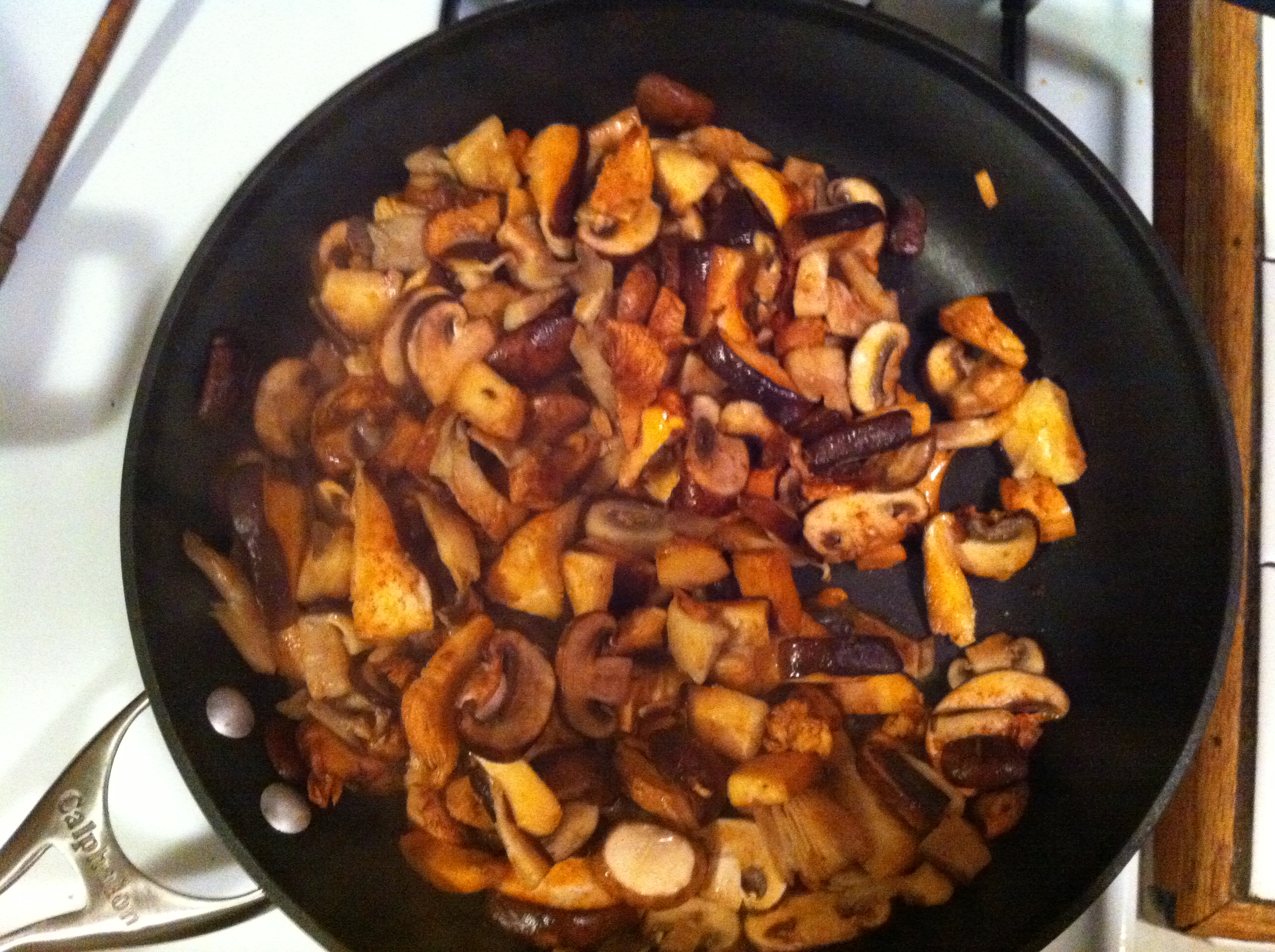
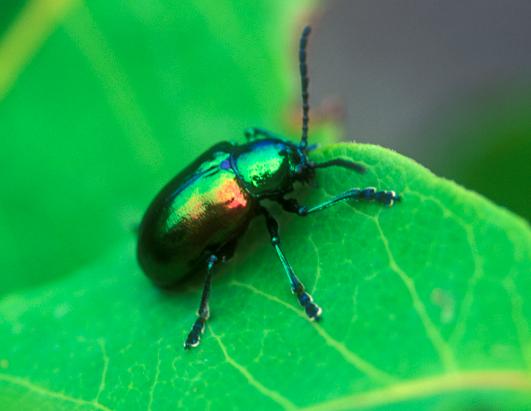

Recent Comments